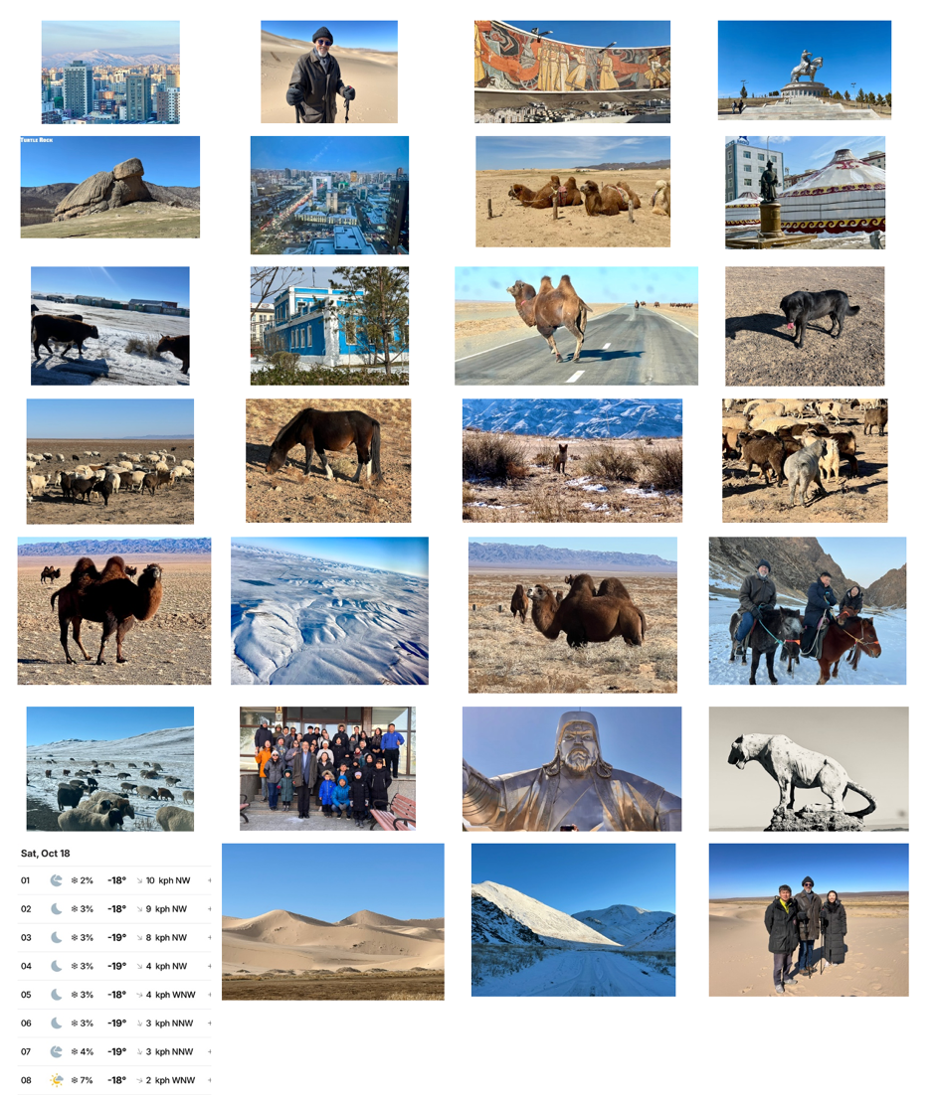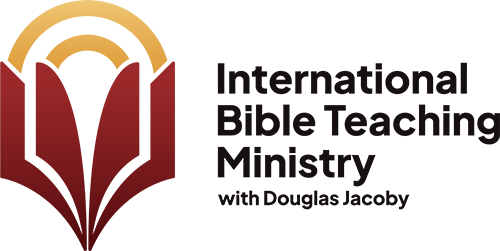
Row 1: The capital’s first snow. On some mornings the temperature was -19º / My Mongolian friends suggested I dress for cold weather—excellent advice! / Zaisan Memorial / Statue of Chinggis Khaan, 1162-1227
Row 2: Turtle Rock, Gorkhi-Terelj National Park / Intense Ulaanbaatar traffic—it can take an hour to drive just 5-10 km / Cameli bactriani are hairier than their Middle Eastern & North African cousins, the more familiar Dromedaries / Traditional meets modern architecture
Row 3: Mongolian Cattle / The older buildings feature bright and happy colors / Hasty camel—they say they’re tasty, too. Many Mongol dishes are based on camel or horse milk / Mongolian sheep/goat-dog (50 kg)—with the thick fur and heavy bones required in such tough terrain
Row 4: Mixed herd, sheep & goats / Domestic horse; we also saw herds of wild horses (Dzungarian or Przewalski’s Horse) / A most curious creature—the Mongolian Corsac Fox / An unusually colored (blue-gray) animal / On our 9-hour drive to the desert, often on unimproved roads or no road at all, we often had to wait for livestock to cross
Row 5: This was my first time to see a two-humped camel. Mongolians savor the milk and meat of the camel / The eerie landscape reminds me of Iceland (show from window seat view, departure from UB) / Bactrian Camel, native to the steppes of Central Asia / On horseback, glacial canyon, with Babu (our driver)
Row 6: Wildlife abounds in Outer Mongolia. (Inner Mongolia is part of China) / Impromptu fellowship shot / Chinggis Khaan has 16 million living descendants / Mongolian Snow Leopard, a rare and endangered species
Row 7: Ulaanbaatar is the world’s coldest capital city (by average temperature) / The Khongor Sand Dunes extend for 100 km—yet compromise only 4% of the Gobi Desert (500,000 sq mi) / Stunning Yolyn Am, in the Gurvan Saikhan Mountains / With Jungho & Joy, church leaders (Ulaanbaatar, or UB, as everyone calls it)
MONGOLIA SHOTS









